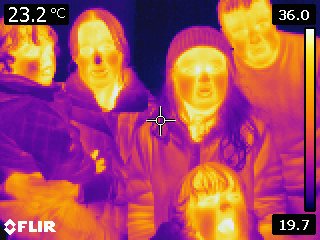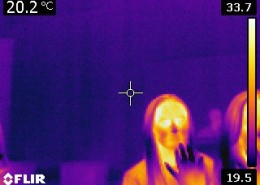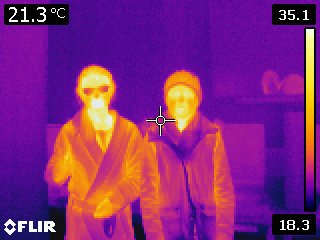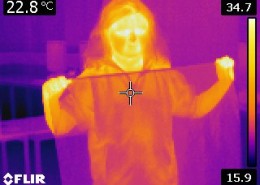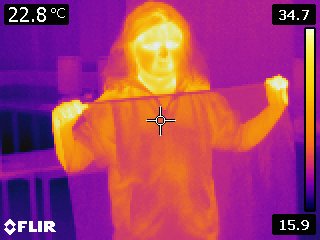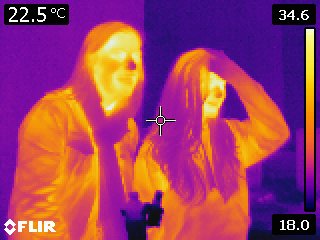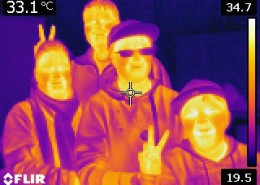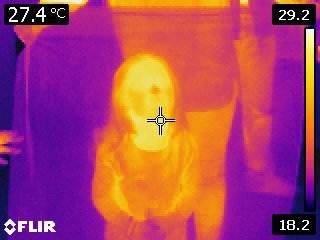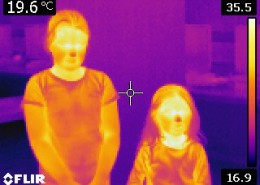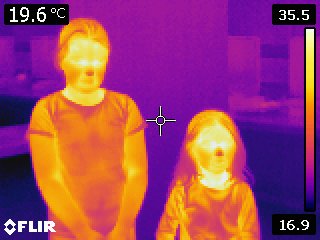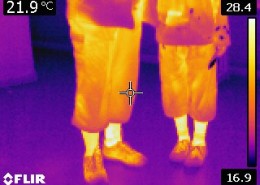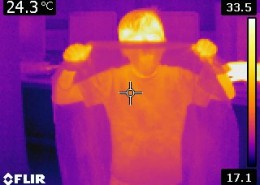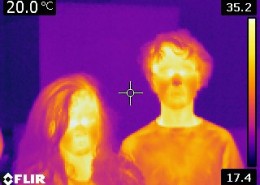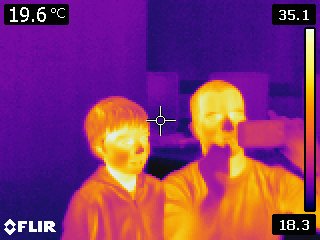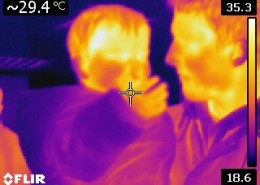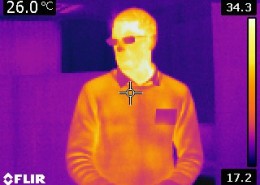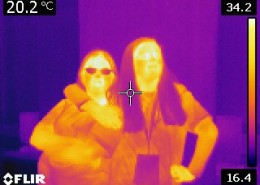Thermal Selfies
Today Think Physics was visiting The Hermitage Academy STEM fair. It was lovely to chat with the people of Chester-le-Street and beyond.
We took with us our thermal camera and plasma ball, both of which we use as part of the ‘Explore your Universe’ workshops (which are available for booking!). Our theme was ‘seeing things differently’ and we were offering ‘Thermal Selfies’. Now, technically, they were infrared photographs – but we decided to go with the catchy title.
We looked at the different types of information that we could get by using different wavelengths of light: visible, infrared and UV. With the IR camera we could measure the temperature of body parts and see who had cold noses. We could also look at how effective coats and jackets were at keeping people warm, by looking at how much IR was radiated by them.
The IR camera allows us to demonstrate why astronomers use telescopes to observe different wavelengths of light by using a black bin bag to simulate interstellar dust. In visible light, we couldn’t see through it, but in IR we could see the children hiding very easily. A handy gadget for our next game of hide and seek!
We also looked at how the sun appears in different wavelengths, comparing the slightly boring visible light pictures with the more interesting UV pictures.
Thank you very much to Ms Rose at the Hermitage Academy for inviting us along to the STEM fair. We had a great time taking thermal selfies and talking physics. As promised, we have put together a gallery of the pictures. If there’s one of you, can you spot it?





